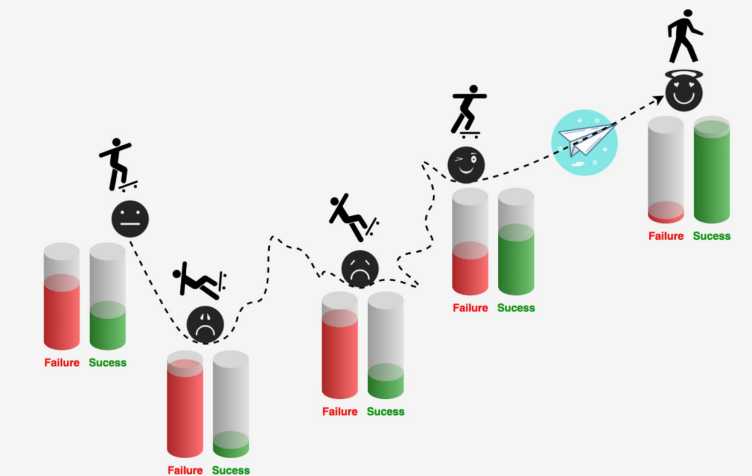Deliberate, Guided Failure

Researcher: Dr Tanmay Sinha
Should scaffolded problem-solving lean towards being more success-driven or failure-driven?
Although learning from failure is a vital skill, leading to resilience, and openness to navigate challenging situations, many educational systems still view failure as a taboo and increasingly undercut failure-driven learning by using instruction-first pedagogies, structured problem-solving practices, and teaching to the test. This project aims to push the boundaries of designing for learning in ways that not only problematize students’ understanding, but also deliberately cultivate moments of failure by nudging generation and exploration of the affordances of suboptimal representations.
What do I mean by suboptimal representations? I mean representations that (by design) will lead to a failed/suboptimal solution to a problem. For reasoning with a dataset about the relationship between two numeric variables, this might mean working with bar-charts or one-dimensional histograms (instead of a scatterplot, for instance). Alternatively, when designing a classification model using machine learning, suboptimal representations can be features that increase noise and confuse the model, or algorithm parameters that reflect a suboptimal design choice with respect to a desired output (e.g., optimal bias/variance). Or, when quantifying the importance of a person in a social network, suboptimal representations can reflect measures that do not adequately consider the quality of connections in the network (e.g., bridges, influence of two-degree connections). Similar analogies can be drawn for several other domains where there are typically multiple suboptimal ways of approaching a problem, each having its tradeoffs.
Typically, suboptimal representations are explicitly taught to students via instruction-first routines – with an emphasis on why right is right, however, such approaches may not adequately help students develop an intuition for why wrong is wrong. Decades of research in the Learning Sciences speak to this conundrum. This project, via a learning design based on problem-solving prior to instruction, provides students opportunities to interact with wrong (suboptimal) representations within tasks that are aligned with disciplinary practices of a domain. Since these challenging exposures happen before formal instruction, students experience negative affect (e.g., shame, anger, disgust, confusion), make several mispredictions and become aware of what they do not know. However, a deeper exploration of the problem-space fueled by the experienced discomfort increases students’ readiness to learn the targeted concept, and in turn contributes to deep conceptual understanding and transfer.
Preliminary project results from classroom and lab-based experimental studies suggest deliberate, guided failure to be more efficacious than success-driven or unscaffolded problem-solving prior to instruction. For educators who want to apply deliberate, guided failure in their classrooms, a positive and trustworthy classroom climate that (a) facilitates appreciation for errorful generation, and (b) devotes resources in helping students understand and manage negative emotions, is imperative.
This project also comprises a translational research agenda of creating intuitive and accessible environments that bring cutting-edge research closer to educational stakeholders with a non-programming background. In that spirit, two open source contributions have been made available that implement (a) an end-to-end multimodal learning analytics pipeline to analyze the incidence and dynamics of emotions from student problem-solving videos, and (b) the affordances of embodied pedagogical agents to provide in-situ scaffolding as students perform data-driven problem-solving.